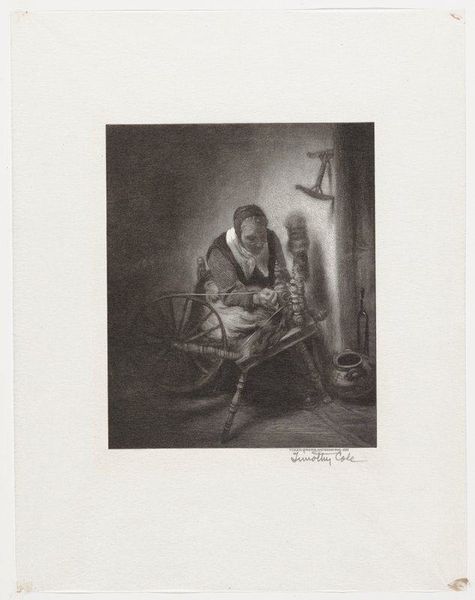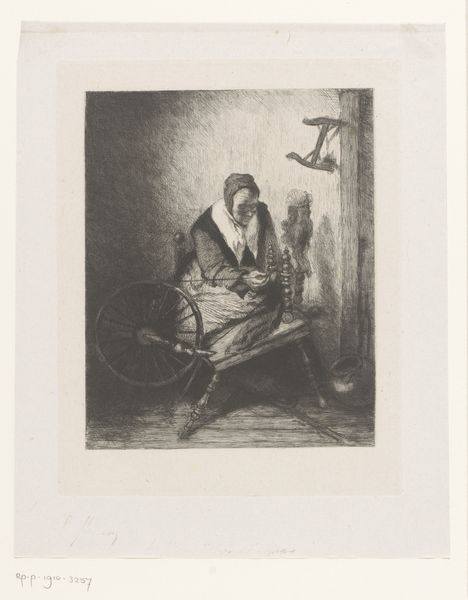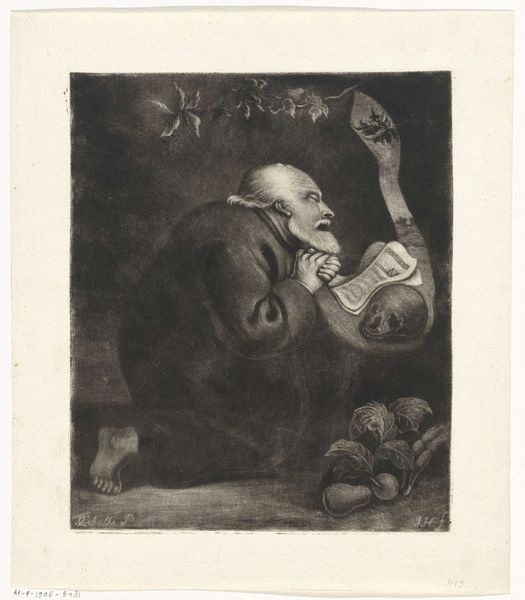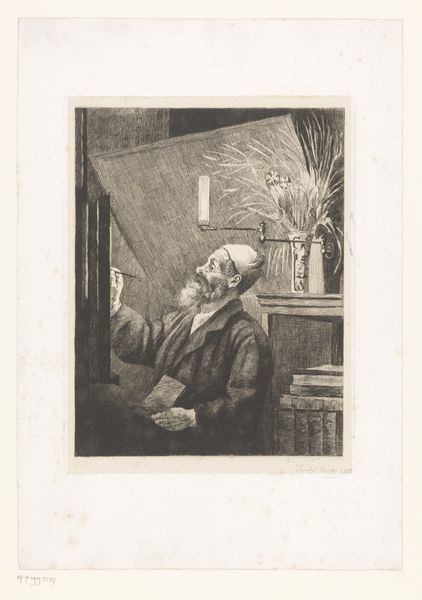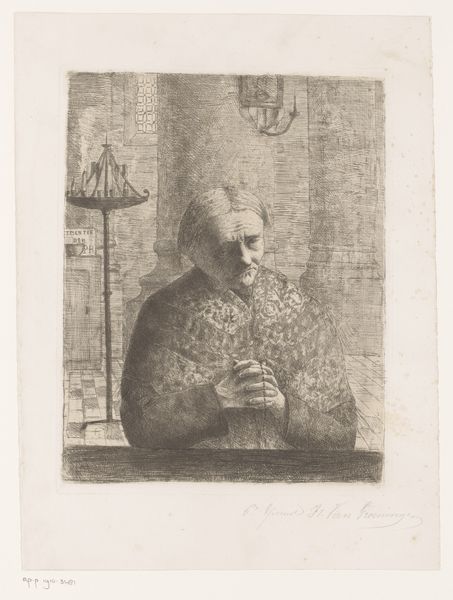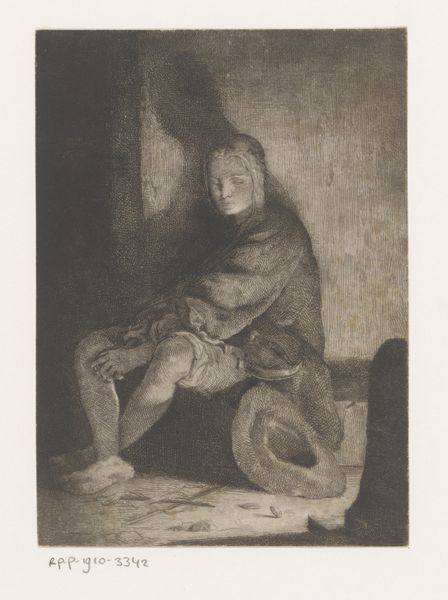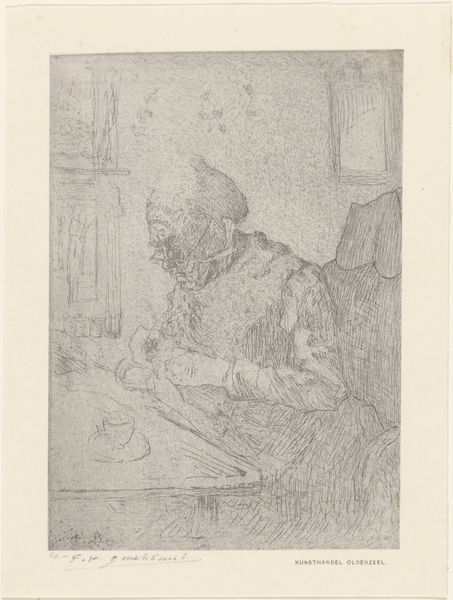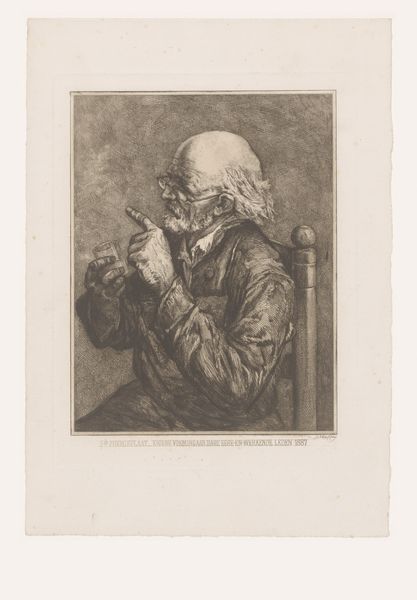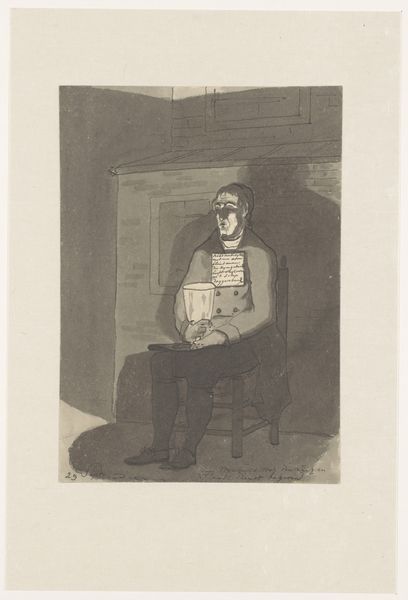
drawing, print, etching
#
portrait
#
drawing
# print
#
etching
#
pencil drawing
#
genre-painting
#
modernism
#
realism
Dimensions: height 199 mm, width 166 mm
Copyright: Rijks Museum: Open Domain
Editor: This is Willem Steelink's "De Spinster," made between 1866 and 1890. It's an etching – quite a detailed one, portraying a woman at a spinning wheel. There’s a feeling of quiet domesticity, almost…melancholy? What social commentary might Steelink be offering here? Curator: This piece offers a window into the complex transformations impacting women's roles during the late 19th century. Steelink, working within a Realist mode, depicts a woman engaged in the traditionally feminine task of spinning. We must consider how the Industrial Revolution displaced many women who worked in textile production. Editor: So, it’s not *just* a genre scene? It reflects societal changes? Curator: Precisely. Ask yourself, what purpose does art serve in an age defined by rapid industrial growth? Genre paintings were, in a sense, a means for solidifying cultural memory, weren't they? Notice, however, the contrast; the wheel almost consumes her while domestic tools like a cooking pot are visible next to her in the dark space in the room. Consider this within the social and political climate of the period. Do these objects serve as comfort, entrapment or is this more of a socio-economical statement about womanhood at that period? Editor: It's making me think about how images of labor change as the means of production shift. Curator: Exactly. Artists like Steelink were participating in constructing narratives around work, value, and gender identity as society industrialized. What is particularly interesting here is the individual in front of such a detailed display, and how it interacts with the socio-economic changes. It is no longer as easy to distinguish it, as say, "starving artists." Editor: I never considered genre paintings in that light. Thanks to your breakdown, this gives a lot to consider regarding working class individuals and their place and perception within our museums! Curator: It reveals the layers of meaning that exist beyond surface representation. Consider this context, the next time you encounter a painting of mundane labor.
Comments
No comments
Be the first to comment and join the conversation on the ultimate creative platform.
